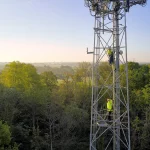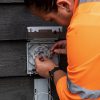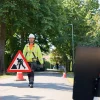Historic UK Fibre Tax Case Resurfaces After VOA Criminal Summonses UPDATE

A historic legal case, which challenged the fairness of the Government’s Valuation Office Agency (VOA) and how it was choosing to tax fibre optic broadband cables between different UK network operators, has reared its head again after several criminal summonses were issued for members of the VOA, HMRC and others for alleged “perjury and fraud“.
Complaints against the business rates system are nothing new and in the past a number of smaller network providers (e.g. Vtesse / Interoute), specifically those that were building their own fibre optic broadband infrastructure, have claimed that the VOA’s “Fibre Tax” treats them unfairly (i.e. forcing them to pay more for their cable deployments than big fixed line providers like BT (Openreach) and Virgin Media).
A few years back, Vtesse Networks (original name before Interoute’s acquisition) challenged the VOA’s method of valuation primarily based on the length of its fibre network, which extended to just over 7,500km. The VOA had valued the fibre at £250/km, whereas Vtesse argued for £20/km (that ostensibly payable by BT), which would have reduced the rateable value (RV) from around £2m to a little over £234k.
Advertisement
Vtesse’s argued that the VOA’s basis of assessment was unlawful in the EU context, in that it breached competition law principles (these require equal treatment in tax terms for comparable businesses and networks). But the Tribunal ultimately found that a different valuation approach was justified, and the appeal was dismissed.
Just to be clear. The Tribunal’s decision made a key point that equality of treatment is a fundamental principle, not only of EU law, but also of UK domestic law insofar as it relates to non-domestic rating. But the principle of equality of treatment applies to comparable hereditaments (i.e. the comparison of like with like, not like with unlike). This principle exists in domestic law for rating purposes, yet the two hereditaments being referred to in this case, Vtesse and BT, were found to be “two wholly different hereditaments, not two comparable businesses”.
However, Aidan Paul, Vtesse’s original founder and chairman (until 2014), has long questioned the outcome of the case and maintained an active interest in investigating the issue. But anybody who thought this one was done and dusted might be in for a shock after Aidan’s latest LinkedIn post went live yesterday.
Aidan Paul said:
“Fibre Tax latest
5 criminal summonses have been issued to 3 members of the Valuation Office Agency, an HMRC Solicitor, and a retired member of the Renfrewshire Assessors by West Herts Magistrates for perjury and fraud for the submission of false evidence and withholding evidence in the 2020 Upper Tribunal hearing, of Vtesse v Gidman [2020] UKUT 13 (LC).
First Hearing December 6th at St Albans Magistrates Court – open to the public.”
Clearly this is a significant development and we have reached out to the VOA for a comment. But it would be quite understandable, given the nature of those summonses, if the agency chose not to issue any detailed public statements until after the case has concluded. At the time of writing we don’t have any further details on this but are investigating.
Advertisement
UPDATE 3pm
As expected, the VOA has declined to comment.
Mark is a professional technology writer, IT consultant and computer engineer from Dorset (England), he also founded ISPreview in 1999 and enjoys analysing the latest telecoms and broadband developments. Find me on X (Twitter), Mastodon, Facebook, BlueSky, Threads.net and Linkedin.
« Sky Broadband UK Move to Fix Sky Talk Activation Bug on FTTP Lines
Over 50 MPs Call on UK Gov to Defend Rural Broadband Funding »






















































Wow this is an interesting one. Does anyone know why is BT allowed to pay 12x less than the Altnets? What makes them different?
It’s about how you calculate the amount due for backbone networks. BT (and a few others) are assessedd based on the amount that they receive in revenue/pay in costs (i.e. the value of the asset) whilst everyone else pays based on the route length.
Access networks are assessed differently, based on the number of subscribers
The unfair part is the instability to chose the method rather than the calculation, some networks would pay more if they were assessed in the same way
So taxpayers’ goes to build fibre networks, then money is recouped from the providers in business taxes. The ISPs pay the network providers to connect their customers, who are charged 20% VAT on their bills. A financial merry-go-round to benefit public officials. Madness.
Indeed, at the time I said that the simplist way of doing rural broadband subsidy was to exempt all connections in ofcom classed rural areas from VAT or business rates for a 15 Year period, incentives would be aligned to get the rollout done quickly to make the most of the exemption period.
I put the two cases I found about this issue (LTS/VA/2013/0367 and RA/47/2018) on Google’s NotebookLM and generated a conversation about it. Listen to it here:
https://notebooklm.google.com/notebook/33c43318-03fc-40ea-890b-f3862384d8ef/audio
Can’t get that link to work . .
“perjury and fraud for the submission of false evidence and withholding evidence” – and against a HMRC solicitor too. Those are extraordinary claims, and yet coming from a magistrates court rather than the CPS.
I’d say these are very unlikely to succeed, and the magistrates involved may get their knuckles rapped.
The private prosecution of Boris Johnson comes to mind, where a district judge completely misdirected themselves on the law in issuing a summons, which was quickly nullified on judicial review.
I’d be surprised if this ever reaches trial – the case will be taken over and dropped by the CPS, the High Court will nullify the summons or the court will eventually discharge the defendants at a case management hearing when sufficient evidence fails to materialise.
I’ve no idea about this particular case.
Not so extraordinary if you are aware of HMRC previous for lying in court and withholding evidence.
If you want to listen to solicitors and barristers lying through their teeth listen to the Post Office enquiry. The evidence is often at variance with the proven facts!
As others have said it could be disposed at a CMC and HMRC generally pull out the big guns to prevent staff being cross examined in open court as a) they are clueless b) the come over just like the Post Office investigators do – small minded bullies c) they are not terribly good liars.
Extensive evidence of false submissions. “Vtesse used high speed fibre and BT didn’t . .”